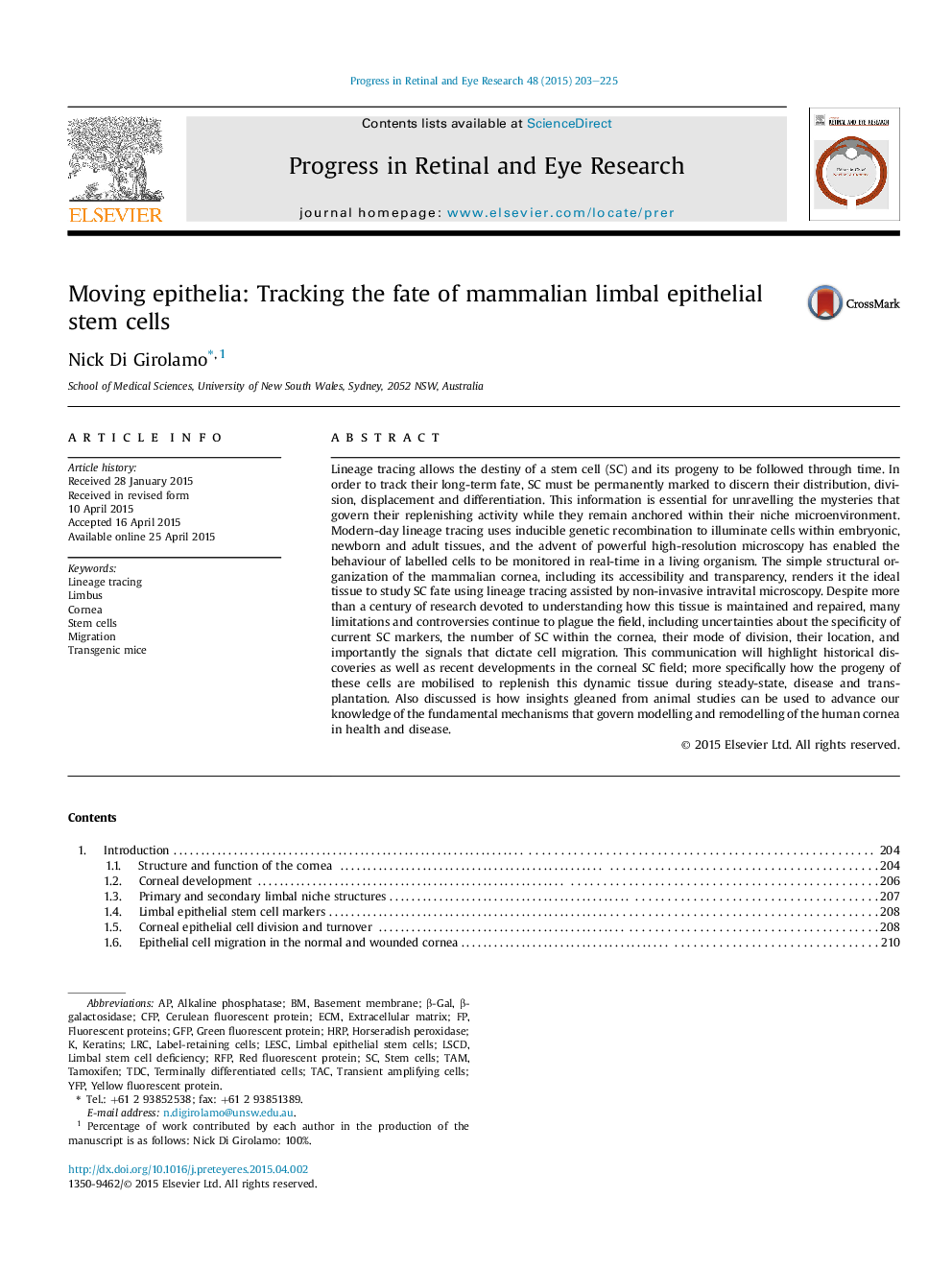| Article ID | Journal | Published Year | Pages | File Type |
|---|---|---|---|---|
| 6202729 | Progress in Retinal and Eye Research | 2015 | 23 Pages |
Lineage tracing allows the destiny of a stem cell (SC) and its progeny to be followed through time. In order to track their long-term fate, SC must be permanently marked to discern their distribution, division, displacement and differentiation. This information is essential for unravelling the mysteries that govern their replenishing activity while they remain anchored within their niche microenvironment. Modern-day lineage tracing uses inducible genetic recombination to illuminate cells within embryonic, newborn and adult tissues, and the advent of powerful high-resolution microscopy has enabled the behaviour of labelled cells to be monitored in real-time in a living organism. The simple structural organization of the mammalian cornea, including its accessibility and transparency, renders it the ideal tissue to study SC fate using lineage tracing assisted by non-invasive intravital microscopy. Despite more than a century of research devoted to understanding how this tissue is maintained and repaired, many limitations and controversies continue to plague the field, including uncertainties about the specificity of current SC markers, the number of SC within the cornea, their mode of division, their location, and importantly the signals that dictate cell migration. This communication will highlight historical discoveries as well as recent developments in the corneal SC field; more specifically how the progeny of these cells are mobilised to replenish this dynamic tissue during steady-state, disease and transplantation. Also discussed is how insights gleaned from animal studies can be used to advance our knowledge of the fundamental mechanisms that govern modelling and remodelling of the human cornea in health and disease.
